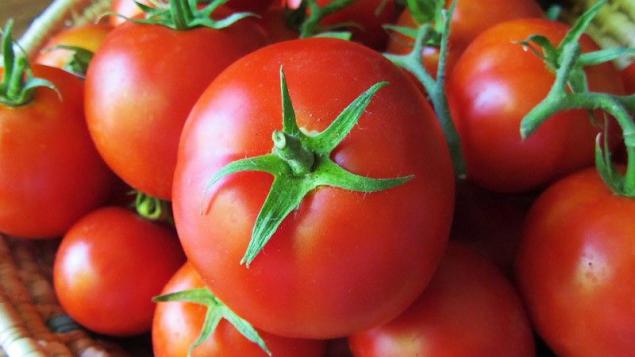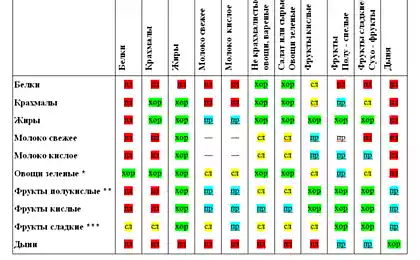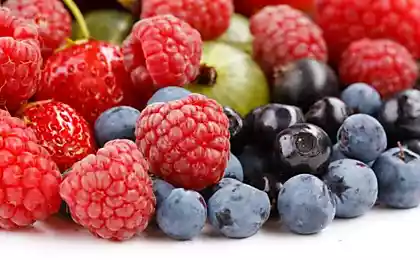2233
The poisonous fruits and vegetables that we eat every day
Sometimes, we are unaware of the hidden threat that lurks in products used every day.

Almond

Almonds are considered to be dried fruit, nuts and not, as many think. It has a unique taste and is one of the most popular ingredients in the preparation of desserts and other dishes. The most fragrant is bitter almonds, which contains poisonous cyanide. It is therefore usually bitter almonds treated to remove the poison. In addition, heating also destroys poison. In some countries, such as New Zealand, the sale of bitter almonds is prohibited by law.
Cashew

Cashew nuts are seeds, not nuts, which grow out of the fruit or "apple" cashew. Cashew, which sell in the store, not the raw and pre-treated with steam. This is done because raw cashews contain the substance urushiol, which can still be found in poison ivy plants that causes allergy symptoms. Consuming large amounts of urushiol can be fatal. Although cashew poisoning is quite rare, the workers that clean the nut, often have undesirable side effects such as skin irritation.
Cherry. Cherry pits

Cherry and apricot, peach and plum in their bones contain cyanide. If you chew, chew, or somehow otherwise damage the bone, then you expose yourself to hydrogen cyanide. Of course, if you swallow a few bones, nothing bad will happen, because our body can cope with a certain amount of cyanide, but in large quantities it can be dangerous. Symptoms of mild poisoning include headache, dizziness, disorientation, anxiety and vomiting. In high doses, it can lead to difficulties in breathing, increased blood pressure and heart rate and renal failure or death.
Asparagus

Asparagus - a vegetable that gives the fruit, which, by the way, is poisonous. The fact that vegetable - is usually edible part of plants, which may be leaves, stems or roots. Asparagus has long been used as a vegetable and a drug through a pleasant taste and diuretic properties. The fruit is a small red berry 6-10 mm in diameter, which are toxic to humans.
Tomatoes. Green tomatoes

Interestingly, in the US tomatoes are considered vegetables, while the rest of the world they are fruit, or more precisely, a berry. The reason for this was a tax on vegetables, but not fruit. The leaves and stems of tomato contain a substance called "glycoalkaloid" which can cause extreme nervousness, headache and upset stomach. Also, a certain amount of the substance contained in green tomatoes, but it is usually a little.
Nutmeg

Nutmeg contains a psychoactive substance - myristicin. Too much of this substance can cause vomiting, sweating, dizziness, hallucinations, and headaches. But do not worry. The amount that is used in cooking, is insufficient to cause any of these symptoms. However, lately teenagers use nutmeg as a light drug, which often is not very good effects.
Mushrooms. Edible and poisonous mushrooms

Mushrooms are considered a delicacy in many countries where they are grown for commercial purposes. But, as is known, there is a family of poisonous mushrooms. Many believe that there are clear signs of poisonous mushrooms, such as a ring on the stem, unpleasant smell and bright colors. However, the only sure way to distinguish edible from poisonous mushroom - it's good to know and understand the mushrooms. Symptoms of mushroom poisoning can appear within 1-2 hours, sometimes 8-12 hours and include abdominal pain, vomiting, nausea and diarrhea. It can poison the well and corrupted by poorly cooked and edible mushrooms.
Chocolate

Although chocolate is toxic to humans, the ingredient theobromine in chocolate is dangerous for dogs and cats. Only 40 grams can cause them serious poisoning, so do not leave chocolate sweets in a handy place for your pets. Although the dose of theobromine contained in the chocolate is too small to cause unwanted effects, some elderly people do not tolerate chocolate.
Green potatoes

Potatoes are one of the most popular vegetables in the world. As well as tomatoes, potatoes contain glycoalkaloids in the stems and leaves. The tubers themselves are safe for human consumption only if they are not turned green and sprouted. Green potatoes contain solanine, which appears when exposed to ultraviolet light. When consuming large amounts of solanine may be signs of poisoning include nausea, vomiting, diarrhea, abdominal pain, and in severe cases lead to coma and even death. That is why potatoes should be stored in a cool, dark place.
Apples. The seeds of apples

Apple seeds as well as cherries and almonds contain cyanide in small doses. However, to cause symptoms of poisoning have to eat large amounts of seed. If you accidentally swallow some seeds whole, it does not affect your health, because our body can cope with a small amount of cyanide. However, chewing the seeds makes them more dangerous, especially for children and pets, which are sufficient for smaller doses of the substance.
Source: bigpicture.ru

Almond

Almonds are considered to be dried fruit, nuts and not, as many think. It has a unique taste and is one of the most popular ingredients in the preparation of desserts and other dishes. The most fragrant is bitter almonds, which contains poisonous cyanide. It is therefore usually bitter almonds treated to remove the poison. In addition, heating also destroys poison. In some countries, such as New Zealand, the sale of bitter almonds is prohibited by law.
Cashew

Cashew nuts are seeds, not nuts, which grow out of the fruit or "apple" cashew. Cashew, which sell in the store, not the raw and pre-treated with steam. This is done because raw cashews contain the substance urushiol, which can still be found in poison ivy plants that causes allergy symptoms. Consuming large amounts of urushiol can be fatal. Although cashew poisoning is quite rare, the workers that clean the nut, often have undesirable side effects such as skin irritation.
Cherry. Cherry pits

Cherry and apricot, peach and plum in their bones contain cyanide. If you chew, chew, or somehow otherwise damage the bone, then you expose yourself to hydrogen cyanide. Of course, if you swallow a few bones, nothing bad will happen, because our body can cope with a certain amount of cyanide, but in large quantities it can be dangerous. Symptoms of mild poisoning include headache, dizziness, disorientation, anxiety and vomiting. In high doses, it can lead to difficulties in breathing, increased blood pressure and heart rate and renal failure or death.
Asparagus

Asparagus - a vegetable that gives the fruit, which, by the way, is poisonous. The fact that vegetable - is usually edible part of plants, which may be leaves, stems or roots. Asparagus has long been used as a vegetable and a drug through a pleasant taste and diuretic properties. The fruit is a small red berry 6-10 mm in diameter, which are toxic to humans.
Tomatoes. Green tomatoes

Interestingly, in the US tomatoes are considered vegetables, while the rest of the world they are fruit, or more precisely, a berry. The reason for this was a tax on vegetables, but not fruit. The leaves and stems of tomato contain a substance called "glycoalkaloid" which can cause extreme nervousness, headache and upset stomach. Also, a certain amount of the substance contained in green tomatoes, but it is usually a little.
Nutmeg

Nutmeg contains a psychoactive substance - myristicin. Too much of this substance can cause vomiting, sweating, dizziness, hallucinations, and headaches. But do not worry. The amount that is used in cooking, is insufficient to cause any of these symptoms. However, lately teenagers use nutmeg as a light drug, which often is not very good effects.
Mushrooms. Edible and poisonous mushrooms

Mushrooms are considered a delicacy in many countries where they are grown for commercial purposes. But, as is known, there is a family of poisonous mushrooms. Many believe that there are clear signs of poisonous mushrooms, such as a ring on the stem, unpleasant smell and bright colors. However, the only sure way to distinguish edible from poisonous mushroom - it's good to know and understand the mushrooms. Symptoms of mushroom poisoning can appear within 1-2 hours, sometimes 8-12 hours and include abdominal pain, vomiting, nausea and diarrhea. It can poison the well and corrupted by poorly cooked and edible mushrooms.
Chocolate

Although chocolate is toxic to humans, the ingredient theobromine in chocolate is dangerous for dogs and cats. Only 40 grams can cause them serious poisoning, so do not leave chocolate sweets in a handy place for your pets. Although the dose of theobromine contained in the chocolate is too small to cause unwanted effects, some elderly people do not tolerate chocolate.
Green potatoes

Potatoes are one of the most popular vegetables in the world. As well as tomatoes, potatoes contain glycoalkaloids in the stems and leaves. The tubers themselves are safe for human consumption only if they are not turned green and sprouted. Green potatoes contain solanine, which appears when exposed to ultraviolet light. When consuming large amounts of solanine may be signs of poisoning include nausea, vomiting, diarrhea, abdominal pain, and in severe cases lead to coma and even death. That is why potatoes should be stored in a cool, dark place.
Apples. The seeds of apples

Apple seeds as well as cherries and almonds contain cyanide in small doses. However, to cause symptoms of poisoning have to eat large amounts of seed. If you accidentally swallow some seeds whole, it does not affect your health, because our body can cope with a small amount of cyanide. However, chewing the seeds makes them more dangerous, especially for children and pets, which are sufficient for smaller doses of the substance.
Source: bigpicture.ru























